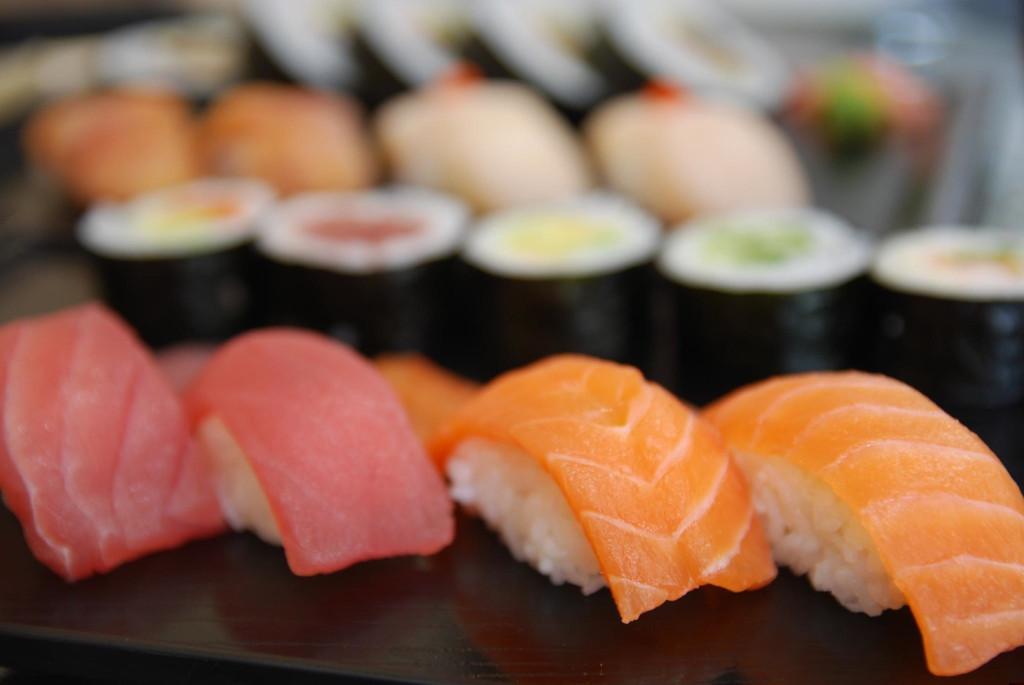Save the sushi!
No stranger to the Graded food-lover, sushi is one of the most talked-up foods in our hallways. From the main attraction at prom last year to the go-to party meal, sushi holds a large place in our community. However, this popular food was challenged two months ago by the Global Issues Network’s presentation on sustainable fish. Although I am a vegetarian, this presentation jolted me, inspiring me to do some more research on the topic of sustainable fish.
Created at the beginning of the 19th century by Hanaya Yohei, sushi is a Japanese food consisting of cooked rice and other ingredients, usually raw fish or other seafood. It has exponentially risen in international popularity during the past few years, especially here in São Paulo. As stated by Casson Trenor, environmental activist and self-proclaimed “sushi-preneur,” “sushi didn’t arise as this kind of thoughtless, high-level, mechanized industry like it is now. It arose in 19th century Japan as a way to honor what was available during the season, in that particular place and time. It was a way to give reverence to what was available, to save and preserve for leaner times.” So what’s the problem? Why are there organizations advocating for change, and new restaurants trying to save the ocean?
It turns out that the majority of the fish wrapped within that dark seaweed we know so well is not sustainable fish; the majority of this fish drains the ecosystem rather than preserves it. In other words, the majority of this fish kills the ocean. According to the Save Our Seas Foundation (SOSF), 3/4 of fish stocks are harvested faster than they can reproduce, with 80% fully exploited or in decline. Scientists estimate that, by 2050, world food fisheries will collapse entirely. In particular, sushi is one of the major forces that has put our underwater friends in danger. The SOSF suggests that, “coveted for their dense, dark red meat used in sushi (where it is known as ‘toro’), bluefin (the Atlantic Bluefin Tuna) support an unsustainable $7.2 billion industry that has driven tuna stocks to the brink of collapse. In 2009, WWF [World Wide Fund for Nature] predicted that without drastic measures, Atlantic bluefin will disappear by 2012.” These statistics are shocking. That steaming fish filet and those delicious fish sticks will completely disappear in less than 40 years. Even more disturbing, those toro rolls could disappear any day. These alarming calculations lead me to wonder: what is being to advocate sustainable fishing?
In recent years, numerous organizations such as the Marine Stewardship Council have sprung up, making sustainable seafood accessible to consumers and raising awareness as to why it is important. In addition, individuals such as Trenor have opened up sustainable sushi restaurants. These include the Tataki in San Francisco, California, and the Bamboo Sushi in Portland, Oregon. Other people have been even more revolutionary like Chef Dan Barber, who declares that a farm that feeds its fish chicken is not sustainable. Barber has explored a revolutionary farming method in Spain that has reached the epitome of eco-friendliness: the ability to self-sustain. Fish feed off of what they would be eating in the wild: plant biomass, phytoplankton, and zooplankton. Moreover, birds and other wildlife are attracted to the fishing farms, not drawn away from them.
After learning about all these initiatives being taken to save the fish, I began to wonder: what can I do to save sushi? How can I, as a Graded student without my own restaurant or organization, help? As many of you know, one subsection of the Graded Global Issues Network group, has decided upon sustainable fishing as their project. In fact, “Fisheries depletion” is one of Jean-François Rischard’s 20 global problems. This GIN subsection, led by Mila Lara and Camila Isern, is trying to change our school’s fish to those that come from a more sustainable source.
Upon being asked what we can do to save the fish, Mila answered, “The first thing we can do is figure out what species of fish are endangered and avoid consuming those. It is important to ask where the fish are coming from, from what source. For example, many of the fish from Chile come from fish farms, which are not sustainable. Asking these kinds of questions is easier especially when you go abroad because many supermarkets tell you exactly the source of their fish.” So next time you order that temaki or get ready to dunk that California roll into soy sauce, make sure to ask where the fish is coming from, make sure you are saving our environment rather than destroying it. With enough support, we can preserve food fisheries; we can prevent 2050 from being sushi’s doomsday.
Mila optimistically says, “I see that people are getting more aware than they were a couple years ago and that is helping. I see that organizations are trying to be international and reach out to more places. This gives hope because it means that people are trying to do something about sustainable fishing.”
Sources: http://tedxtalks.ted.com/, http://saveourseas.com/, http://www.ted.com/, http://bamboosushi.com/videos/

Pooja is Features Assistant Editor and this is her first year as part of The Talon staff. She likes eating and public speaking. Pooja often questions her...









